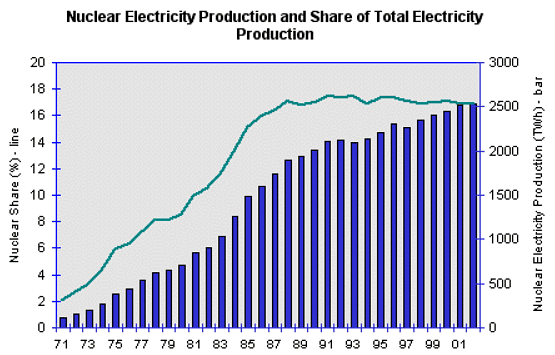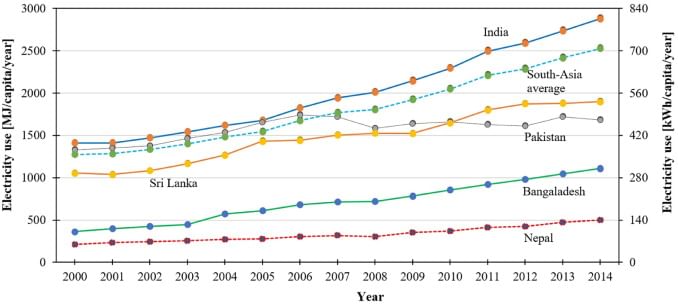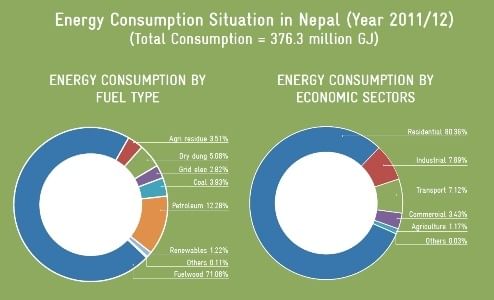Class 10 Exam > Class 10 Notes > Geography for GCSE/IGCSE > Nuclear Energy & Fuelwood
Nuclear Energy & Fuelwood | Geography for GCSE/IGCSE - Class 10 PDF Download
Nuclear Energy & Fuelwood
- Nuclear fuel has the potential to provide large amounts of energy
- It is often used in countries that do not have their own supplies of fossil fuels, such as France

- In 2019, around 4% of the global primary energy supply came from nuclear power
- There are 439 active nuclear reactors worldwide. The majority of these are located in just five countries:
- USA (92)
- France (56)
- China (54)
- Russia (37)
- Japan (33)
Nuclear Energy Controversies
- Nuclear energy is a contentious topic primarily due to concerns related to waste disposal and the occurrence of nuclear accidents.
Three Mile Island Incident
- The Three Mile Island incident took place in the USA in 1979, involving a partial meltdown of the nuclear reactor.
- Following the incident, there was a slight increase in cancer rates in the affected area due to the release of radioactive contamination.
Chernobyl Disaster
- Chernobyl, located in what is now Ukraine but was then part of the USSR, experienced a catastrophic reactor explosion in 1986.
- Approximately 50 direct deaths were reported according to UN estimates.
- An estimated 4000 individuals have either died or are expected to die as a consequence of exposure to radioactive materials.
- The radioactive fallout spread across a vast region, including Scandinavia and the UK.
Fukushima Nuclear Disaster
- In 2011, the Fukushima nuclear reactor in Japan failed following a tsunami triggered by an earthquake.
- The flooding caused by the tsunami resulted in a loss of power at the power station, leading to the inability to cool the reactor.
- Subsequently, explosions occurred, the reactor melted down, and radioactive contamination was released.
- As a consequence, 154,000 people were evacuated from the area.
- Since 2011, there has been a noted increase in thyroid cancer cases in the region, potentially influenced by the implementation of a post-event screening program.
Advantages and disadvantages of nuclear energy

Fuelwood
Overview
- Over 2 to 3 billion individuals globally depend on fuelwood for heating and cooking due to limited access to other energy sources.
- Roughly 13% of the global population lacks electricity, a prevalent issue in Less Economically Developed Countries (LEDCs) particularly in Sub-Saharan Africa and Asia.
Key Points
- Fuelwood is often utilized as a biofuel, sourced from trees not specifically cultivated for heating and cooking purposes. This practice lacks sustainability as trees are not replanted after being felled.
- Reasons for the reliance on fuelwood include its cost-effectiveness, simplicity, and potential renewability if trees are replaced, requiring no advanced technology for utilization.
- However, drawbacks of this reliance are significant:
- Contribution to deforestation, soil erosion, and desertification in various regions.
- Annual wood harvesting surpasses replanting rates, leading to depletion in many areas.
- Scarcity of wood results in increased distances traveled by individuals to gather it.
- Indoor pollution from fuelwood usage causes health problems, with an estimated 1.5 million deaths annually in LEDCs attributed to smoke exposure.
Question for Nuclear Energy & FuelwoodTry yourself: What is one of the main reasons for the reliance on fuelwood?View Solution
Case Study: Nepal
Nepal's Profile
- Classification as a developing nation situated between China and India
- Characterized by a mountainous terrain encompassing a significant portion of the Himalayas
- Predominantly rural populace with only 16% residing in urban areas
- Experiencing a low but increasing energy demand due to ongoing development
Energy use comparison between Nepal and the UK:

Energy mix
- Primary energy source for 82% of rural Nepalese population: fuelwood
- Urban regions rely on fuelwood for 36% of energy needs
- Nepal lacks indigenous coal, oil, and gas reserves, necessitating importation
- Hydropower serves as the source for 98% of Nepal's electricity generation
Energy Mix in Nepal:

Sustainable future
- Access to electricity has significantly increased in Nepal over the past 15 years, with 88% of the population now having access to electricity.
- Support from the World Bank has played a crucial role in attracting more investment in hydropower projects in Nepal.
- Currently, there are over 3000 micro-hydro plants operating in Nepal.
Ruma Khola Micro-Hydro Plant
- Completed in 2009, the Ruma Khola micro-hydro plant stands as a significant achievement.
- It provides electricity not only for the town of Darbang but also for five neighboring villages.
- The plant's impact extends to powering 22 different industries, including metal workshops, furniture manufacturers, cement block manufacturers, a noodle factory, poultry farms, and dairy farms.
- Funded through grants from the government with support from the World Bank, the community-built and operated plant has improved living standards.
- The loans for the project are repaid through community payments for electricity, leading to reduced reliance on kerosene and fuelwood, lower emissions, and decreased deforestation in the region.
The document Nuclear Energy & Fuelwood | Geography for GCSE/IGCSE - Class 10 is a part of the Class 10 Course Geography for GCSE/IGCSE.
All you need of Class 10 at this link: Class 10
|
55 videos|68 docs|78 tests
|
FAQs on Nuclear Energy & Fuelwood - Geography for GCSE/IGCSE - Class 10
| 1. How does Nepal rely on fuelwood for energy? |  |
Ans. Nepal heavily relies on fuelwood for energy due to limited access to modern sources of energy like electricity or gas. Many households in rural areas use fuelwood for cooking and heating.
| 2. What are the environmental impacts of using fuelwood in Nepal? |  |
Ans. The widespread use of fuelwood in Nepal has led to deforestation, soil erosion, and air pollution. It contributes to environmental degradation and negatively impacts biodiversity.
| 3. How does nuclear energy compare to fuelwood in terms of sustainability in Nepal? |  |
Ans. Nuclear energy is considered a more sustainable source of energy compared to fuelwood in Nepal. It does not contribute to deforestation and pollution like fuelwood does, making it a more environmentally-friendly option.
| 4. What are the challenges faced by Nepal in transitioning from fuelwood to nuclear energy? |  |
Ans. One of the main challenges is the high cost of building and maintaining nuclear power plants. Additionally, there may be resistance from communities that have relied on fuelwood for generations.
| 5. What steps is Nepal taking to reduce its dependence on fuelwood and promote nuclear energy? |  |
Ans. Nepal is exploring options to increase access to alternative sources of energy, such as hydroelectric power and solar energy. The government is also investing in research and infrastructure to support the transition to cleaner energy sources like nuclear power.
Related Searches















